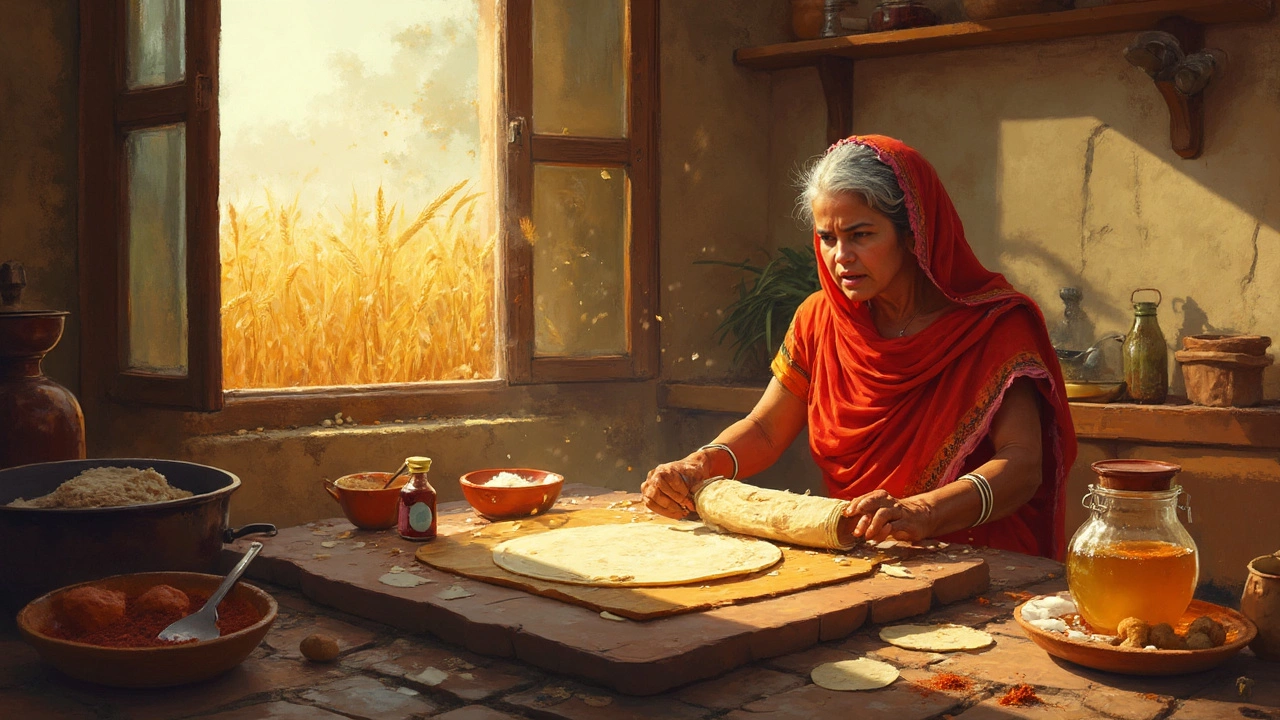Chapati vs Roti: What Sets These Indian Flatbreads Apart
When comparing chapati vs roti, two staple Indian flatbreads that look alike but have distinct textures and cooking tricks. Also known as flatbread showdown, it helps home cooks decide which one fits their meal plan. Most people think they can swap them freely, but the dough, heat, and finishing steps differ enough to change the eating experience.
First, meet the players. chapati, a thin, soft bread made with whole‑wheat flour and water usually stays flat, while roti, a slightly thicker, puffed version cooked on a hot skillet aims for a bubble‑filled interior. Chapati vs roti therefore encompasses differences in flour type, dough hydration, and cooking method.
Why the Confusion Matters in Your Kitchen
Understanding the distinction saves you time and frustration. Roti needs a bit more oil or ghee in the dough to stay soft, and the pan must be hot enough to create steam that lifts the bread. Chapati, on the other hand, benefits from a drier dough and a gentler heat that keeps it pliable for rolling. When you know these nuances, you stop wondering why your flatbread is hard or why it won’t puff.
One common trick is adding baking soda, a small amount of alkaline that lightens the texture to roti dough. Baking soda influences roti texture by creating tiny air pockets that help the bread rise during cooking. However, too much turns the flavor soapy, so a pinch is enough.
Another tip is timing the oil. oil in dough, a splash of vegetable oil or melted ghee mixed into the flour-water blend softens the gluten network, making the final roti fluffy and easier to puff. Adding oil too early can make the dough greasy, while adding it at the end doesn’t integrate well. The sweet spot is right after the initial knead.
When you try to puff a chapati and it stays flat, it usually means the pan isn’t hot enough or the dough is too wet. Proper dough hydration is a key attribute of roti; it requires enough water to form a smooth, non‑sticky ball but not so much that the bread becomes soggy. The right balance lets the steam generate inside the roti, producing that signature puff.
Seasonality doesn’t change the science, but regional habits do. In North India, families often use whole‑wheat atta for both breads, while in South India, a mix of chickpea flour appears in some roti recipes. These variations influence the flavor profile and how the flatbread pairs with curries, dals, or pickles.
Beyond the basics, the collection of articles below dives deeper into each nuance. You'll find why certain roti batches fail to puff, how a pinch of baking soda can rescue a tough dough, and the exact moment to fold oil into the mix for ultimate softness. Whether you’re a beginner looking for a reliable method or an experienced cook fine‑tuning texture, the posts cover every angle.
So grab your skillet, measure that tiny spoon of soda, and get ready to tell the difference between chapati and roti the right way. The upcoming guides will walk you through troubleshooting, flavor tweaks, and even the science behind each step, ensuring your next flatbread lands perfectly on the plate.

Chapati vs. Roti: Caloric Differences You Need to Know
Delving into the caloric differences between chapati and roti, this article offers valuable insights into Indian staple foods. Both chapati and roti are popular in Indian households, often served with sabzi or dabbed with ghee. Understanding how many calories in 1 roti and the impact of accompaniments like ghee can help maintain a balanced diet. Discover practical tips to make healthier choices without compromising on taste.